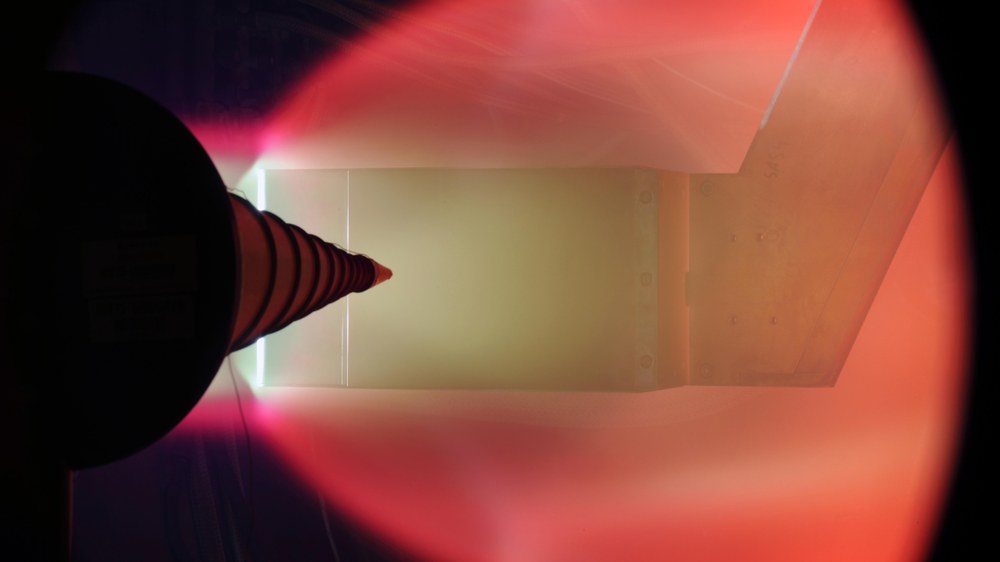The end of radio silence – wind tunnel tests simulate a new method for communicating with spacecraft
Entering a planetary atmosphere is one of the most critical mission phases for a spacecraft. The enormous amount of heat generated not only places heavy thermal loads on the material of the re-entry vehicle, it also gives rise to an electrically charged plasma that flows around it. This blocks radio signals, with the result that the spacecraft is unable to communicate with its ground stations for several minutes. In a joint project, researchers at the German Aerospace Center (Deutsches Zentrum für Luft- und Raumfahrt; DLR) are working with colleagues at Stanford University in California to find a solution to this problem.
The phenomenon of ‘re-entry blackout’ during the transition from the vacuum of space into the atmosphere of a planet has occupied generations of scientists and engineers since NASA’s Mercury, Gemini and Apollo programmes in the 1960s and 1970s. At altitudes of 40 to 90 kilometres, radio waves cannot penetrate the plasma flows created by shock heating, thus preventing data transmission. As a result, critical information that might contribute to the success or failure of a mission is unavailable. During the Space Shuttle era, the problem was partly solved by the shape of the shuttle. Its design caused the existence of areas with a lower plasma flow density, thus enabling communication. Factors such as the angle of entry, speed (usually Mach 20 to 25) and the shape of the spacecraft all affect the density of the ionised gas flow.
Tests in a heated wind tunnel
In January 2016, a test campaign took place using the arc-heated wind tunnel operated by the Supersonic and Hypersonic Technology Department at the DLR Institute of Aerodynamics and Flow Technology in Cologne, to search for solutions to this problem. Realistic test conditions were recreated together with US scientists from Stanford University, led by Siddarth Krishnamoorthy. The test device, consisting of a heat shield with a transmitter placed behind it, was exposed to a plasma flow heated to several thousand degrees. An antenna was installed outside the hot gas flow to receive the radio signals.
Negative voltage, positive effect
The key to the new approach for preventing re-entry blackouts is a negative voltage field generated in the vicinity of the transmitter’s antenna. The negative voltage diverts the ionised plasma flow, thus opening a window for the radio signals. This window cannot be kept open continuously. Therefore, the voltage is pulsed for intervals of a few milliseconds. This is sufficient to allow for data transmission and reception.
Until now, the method of using pulsed electric fields had only been developed in numerical simulations. This series of tests represents another step towards future use in space.
Krishnamoorthy is impressed by the ease of collaboration: “In just three months, we have had the opportunity to test our process in practice and, simultaneously, benefit from DLR’s experience in this area.”
Ali Gülhan, Head of the Supersonic and Hypersonic Technology Department, has an equally positive opinion: “The cooperation between DLR and Stanford University provides an ideal framework for addressing the problem of communications blackouts.”
The process under test will be further refined and developed for use in new and existing spacecraft.



